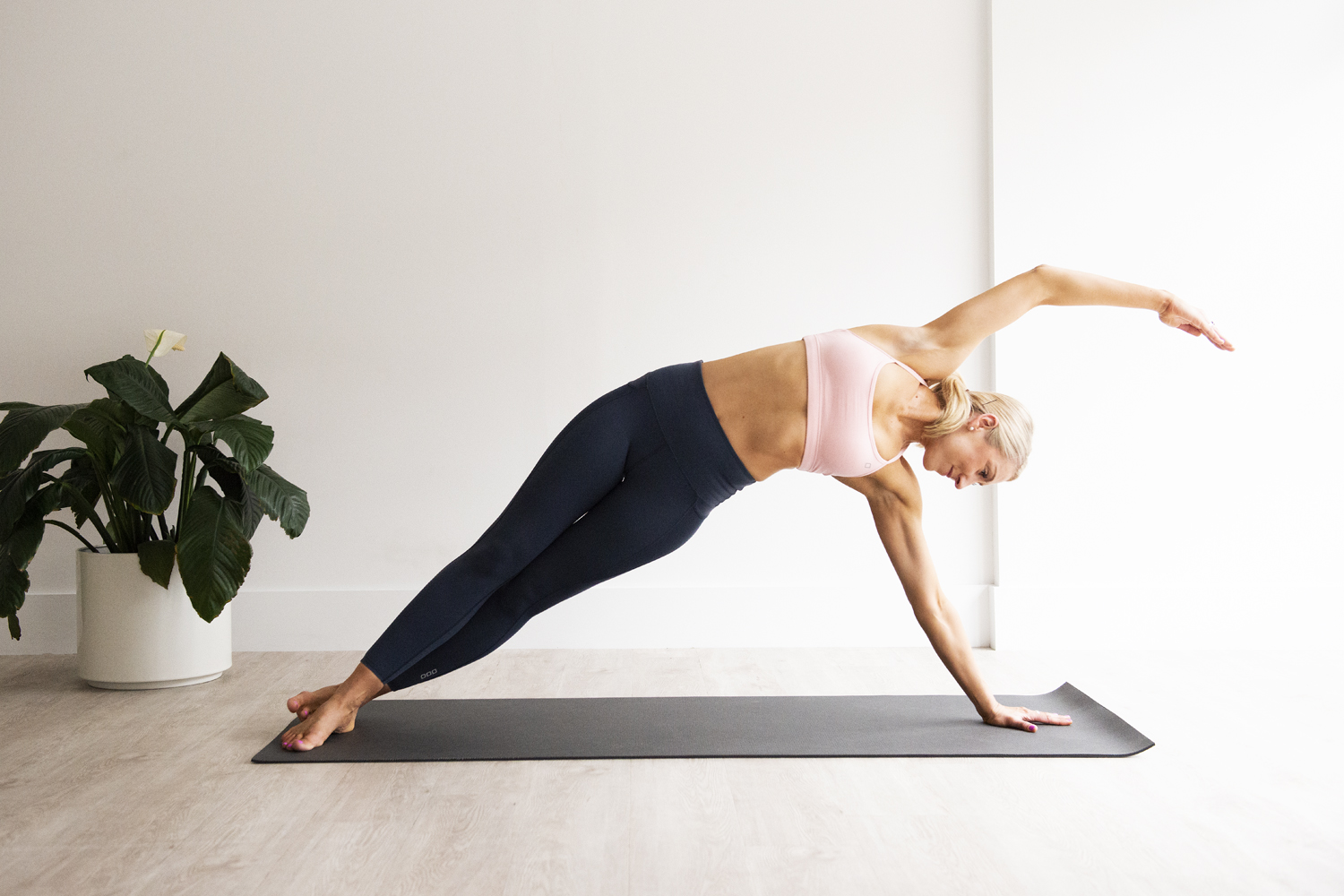Pilates side bend - what is works, how to cue it and clients that will benefit from it
Pilates side bend is a fantastic exercise that fires up pretty much all of the main myofascial slings discussed throughout the APPI Pilates teacher training. It's a great way to progress upper quadrant strength once your client has good deep neck flexor endurance and good scapulothoracic awareness and control. It would be advisable to train your client in a 4 point kneeling position to address the above areas before progressing to side bend level 1.
Types of patients who would benefit:
- Those requiring isometric rotator cuff strengthening (level 1 especially)
- Those requiring oblique and core strengthening
- Those requiring glute med and lateral sling strengthening (especially the variation shown of level 1 with the hip abduction component)
- General Pilates clientele wishing to progress and incorporate full body conditioning into their programme.
In the video, we see a few variations of side bend.
APPI Pilates Side Bend Level 1: Ideal to progress upper body and core strength from 4 point kneel ingbased exercises. As the level of difficulty increases, so do the watchpoints, so there are some important cues which will help your client get the best out of the exercise.
"Keep your head in line with your spine".
A mirror is helpful if you have access to one. It's very easy for gravity to take over the weight if the head and to fall into cervical lateral flexion which we want to avoid.
" Maintain your rib-hip connection" or " keep the imaginary springs between your ribs and hips on even tension" this cue is important especially as the upper-most arm becomes involved - there is a tendency for spinal extension - the idea is to maintain good abdominal activation throughout and a fairly neutral spine, this tendency is particularly noticeable in individuals who are quite mobile through their spine and shoulders.
Variation 2: Ideal to strengthen the lateral sling. This exercise has been shown through EMG studies to be one of the most effective gluteal exercises to activate gluteus medius.
Once your client is in the modified side plank position cue, " keep your hips up as you lift the top knee". This is the hardest part of the movement as glut med on the underneath side must work to maintain pelvic alignment as the top leg abducts. There is a tendency to fall into relative hip adduction of the bottom leg which we want to avoid.
APPI Pilates Side Bend Level 2: Ideal to challenge balance, spinal mobility, coordination as well as upper body and core strength. Cues - "Push yourself out of the floor" this can help to engage serratus anterior on the weight bearing side. Cue - " Glue your inner thighs together" This will help engage adductors for more control in this challenging position with a small base of support.
When starting out, commence with just a few repetitions done regularly to build up endurance, then aim for long holds to develop isometric rotator cuff and trunk strength as control improves.
Precautions: This is not a starting point exercise for most people, ensure that good control and awareness has been obtained in a 4 point kneel and plank positions (in which weight bearing occurs through both sides ) before progressing to this unilateral exercise. Take care with those who experience a lot of tension through the upper quadrant and people with very mobile shoulders who have not done the foundation work on their proprioception and control.
